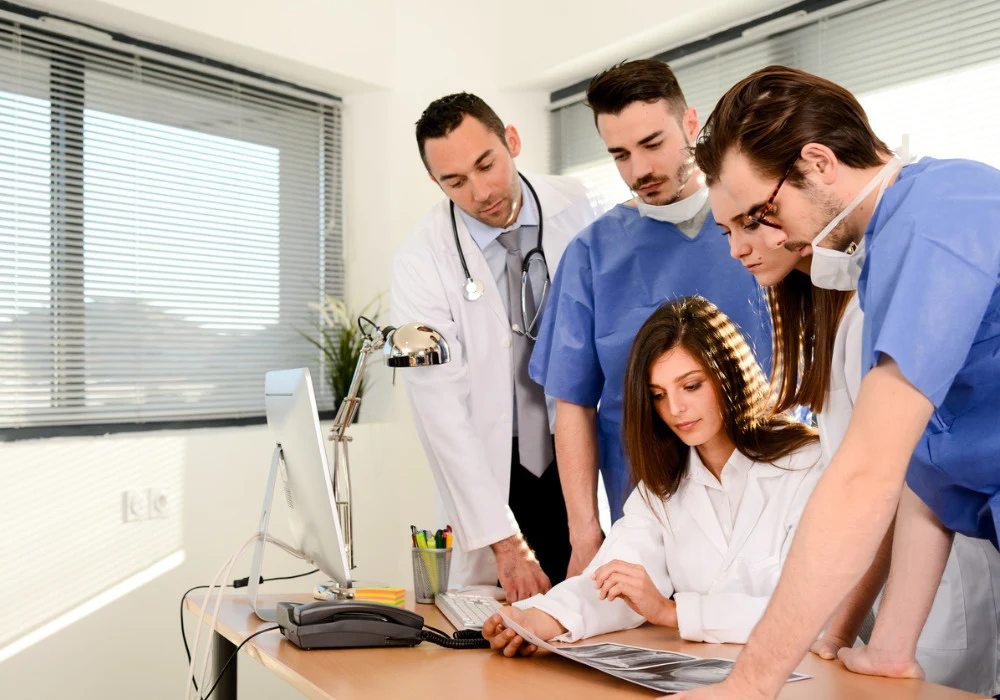The advent of Electronic Health Records (EHRs) has transformed healthcare, offering a digital platform for managing patient data, clinical documentation, and care coordination. While EHRs are integral to clinical workflows, their role in medical education remains underexplored, particularly for medical students in clerkships. A recent review published in JAMIA Open explores EHRs' use as an educational tool to provide objective feedback, track clinical exposure, and enhance professional development in medical students. By leveraging EHR capabilities, educators can create structured learning experiences and opportunities for self-directed growth, ultimately fostering better clinical training.
Generating Objective Benchmarks to Monitor Clinical Learning
Medical education often needs help to provide objective feedback and consistent benchmarks for student evaluation. Traditional clerkship assessments can be highly subjective, creating challenges in fair and constructive grading. EHRs, however, present a solution for generating more structured and objective feedback by tracking the breadth of clinical experiences. These records can provide data on patient encounters, diagnoses, and interventions, offering students a comprehensive view of their clinical learning.
Some medical institutions use Required Clinical Experience (RCE) logs, where students manually record their exposure to specific cases or diagnoses. However, this process can be time-consuming and often needs more accuracy. Incorporating EHR-based tools can automate this tracking process, logging meaningful student-patient interactions without manual input. For example, an EHR system could automatically log a student's involvement in managing a patient with congestive heart failure or a gynecologic surgery, allowing for seamless tracking of the RCEs. This simplifies documentation and aligns educational goals with real-world clinical cases. Further enhancement of EHR analytics could even predict gaps in a student's clinical exposure, prompting opportunities to broaden experience before entering residency.
Tracking Patient Outcomes to Foster Professional Development
One of the significant yet often overlooked benefits of EHRs in medical education is the ability for students to track patient outcomes. Understanding the full trajectory of a patient’s health journey, from diagnosis to treatment and follow-up, is crucial in developing clinical reasoning and empathy. However, students often only see a snapshot of a patient's care during their limited time in clinical rotations, leaving them disconnected from long-term outcomes.
EHRs can bridge this gap by enabling students to follow up on the progress of patients they have seen. For instance, a student who assisted in diagnosing a patient with a chronic condition like diabetes can later track that patient's progress through the EHR system. Notifications on patient status changes, such as rehospitalisations or complications, can be set up to provide real-time updates, helping students see the impact of their clinical decisions and interventions. This continuous feedback loop fosters professional growth and a deeper understanding of disease management and prognosis. Additionally, tracking patient outcomes helps medical students build a comprehensive narrative around illnesses, enhancing their clinical acumen and decision-making skills.
Enhancing the “Panel Management” View for Holistic Training
As healthcare delivery increasingly shifts towards ambulatory care, medical students need exposure to population health management and outcomes-based care. EHRs offer a “panel management” perspective, enabling students to oversee groups of patients rather than individual cases. This holistic approach aligns with graduate medical education competencies, such as Practice-Based Learning and Improvement, which focus on improving patient care outcomes across broader populations.
By incorporating EHR-based educational tools, students can monitor metrics for different patient panels and analyse clinical patterns and interventions. For example, they can observe how certain treatments impact patient groups with common conditions like hypertension or diabetes. These insights help students develop a broader understanding of patient care, moving beyond individual diagnoses to include management strategies for various health issues in the community.
While assessing medical student performance based on patient outcomes tracked in the EHR presents challenges, such as low patient volumes and team-based care, efforts are underway to attribute care metrics at an individual level. One model, TRainee Attributable & Automatable Care Evaluations in Real-Time (TRACERs), has been proposed to assess medical trainees by linking EHR data with student activities like note-taking and order placement. Using these evaluative frameworks within EHRs can deepen the quantitative understanding of student progress and link educational experiences to actual patient outcomes.
Electronic Health Records hold immense potential as a tool to enhance medical education. By leveraging their capabilities to provide structured, objective feedback, track patient outcomes, and offer a population health management perspective, EHRs can be powerful instruments for clerkship training. This approach promotes self-directed learning, encouraging medical students to take a more active role in their professional development. As the medical field continues to integrate advanced technologies and data analytics, the role of EHRs in education will undoubtedly expand, paving the way for more precise, comprehensive, and impactful medical training.
Source:JAMIA Open
Image Credit: iStock






